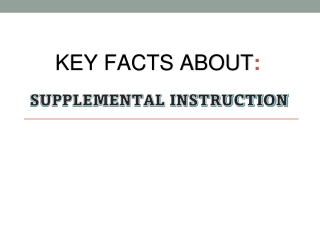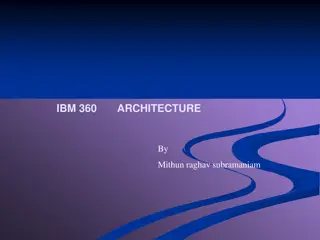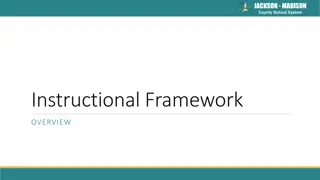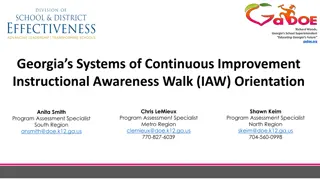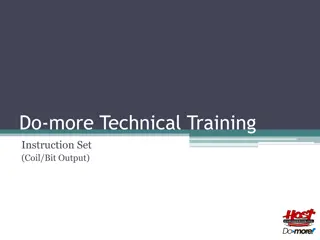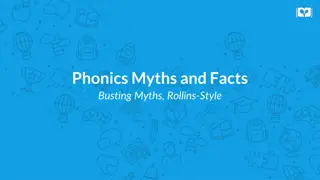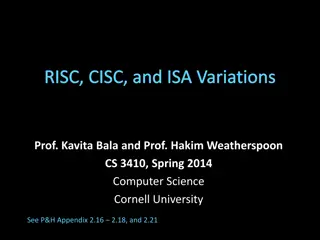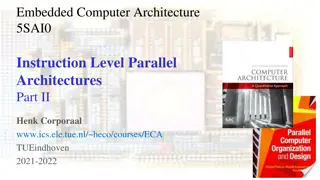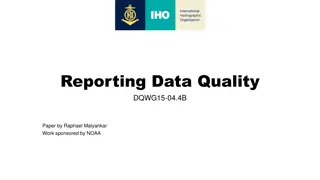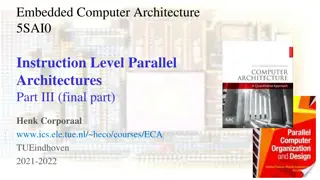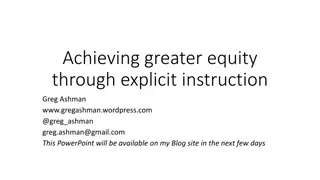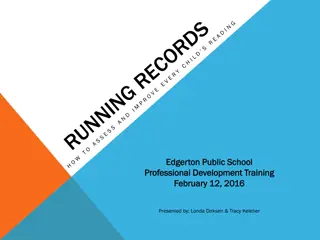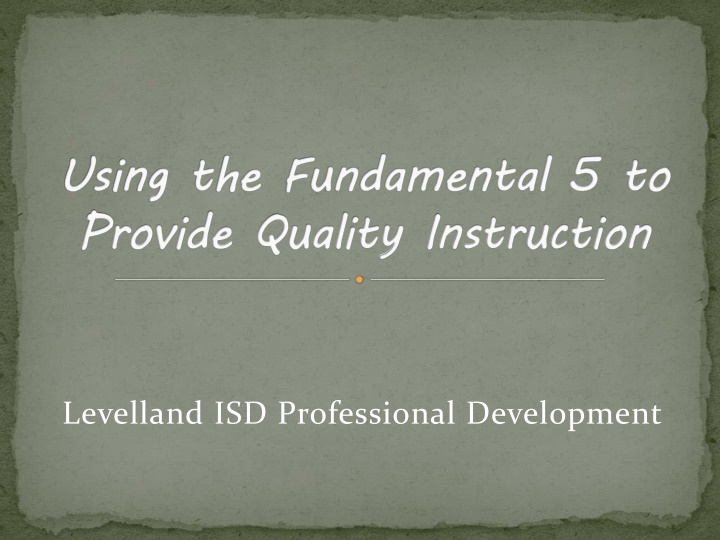
Fundamental 5 Strategies for Quality Instruction in Levelland ISD
Explore the importance of instruction and the Fundamental 5 strategies for quality instruction, focusing on framing the lesson, working in the power zone, and more to enhance student learning in Levelland ISD. Discover how these 5 fundamentals can be interconnected for dramatic effects in every lesson.
Download Presentation

Please find below an Image/Link to download the presentation.
The content on the website is provided AS IS for your information and personal use only. It may not be sold, licensed, or shared on other websites without obtaining consent from the author. If you encounter any issues during the download, it is possible that the publisher has removed the file from their server.
You are allowed to download the files provided on this website for personal or commercial use, subject to the condition that they are used lawfully. All files are the property of their respective owners.
The content on the website is provided AS IS for your information and personal use only. It may not be sold, licensed, or shared on other websites without obtaining consent from the author.
E N D
Presentation Transcript
Using the Fundamental 5 to Provide Quality Instruction Using the Fundamental 5 to Provide Quality Instruction Levelland ISD Professional Development
The Importance of Instruction The Importance of Instruction the results of the study well document that the most important factor affecting student learning is the teacher The immediate and clear implication of this finding is that seemingly education by improving the effectiveness of teachers than by any other single factor. the results of the study well document that the most important factor affecting student learning is the teacher The immediate and clear implication of this finding is that seemingly more can be done to improve education by improving the effectiveness of teachers than by any other single factor. more can be done to improve
Lesson Frame Lesson Frame Today we will examine the Fundamental 5 strategies for Quality Instruction. I WILL answer the following question in writing: What obstacles might I have to overcome as I implement the Fundamental 5 in my classroom? Today we will examine the Fundamental 5 strategies for Quality Instruction. I WILL answer the following question in writing: What obstacles might I have to overcome as I implement the Fundamental 5 in my classroom?
Fundamental 5 Fundamental 5 1. 1. Frame the Lesson 2. 3. about the learning 4. 5. Frame the Lesson 2. Work the Power Zone 3. Frequent, Small Group, Purposeful Talk about the learning 4. Recognize and Reinforce 5. Write Critically Work the Power Zone Frequent, Small Group, Purposeful Talk Recognize and Reinforce Write Critically High frequency and high quality are the key to success! High frequency and high quality are the key to success!
OVERVIEW OVERVIEW These are NOT RECOMMENDATIONS from which you pick and choose. These are 5 individual practices that interact and interconnect to produce dramatic effects. One MUST execute ALL 5 fundamentals EVERY lesson. (If even one is missing or used haphazardly, it greatly diminishes the effect.) Think of a fist astray, you will not be able to strike with force. These are NOT RECOMMENDATIONS from which you pick and choose. These are 5 individual practices that interact and interconnect to produce dramatic effects. One MUST execute ALL 5 fundamentals EVERY lesson. (If even one is missing or used haphazardly, it greatly diminishes the effect.) Think of a fist one finger is broken or goes astray, you will not be able to strike with force. one finger is broken or goes
Framing the Lesson Framing the Lesson Simplest form: represents the beginning and end of a lesson 2 Distinct parts: The daily learning objective; The closing question, product, or task. o DAILY LEARNING OBJECTIVE o What the student can expect to learn today o Stating (Verbalizing) the learning objective(s) at the very beginning of each lesson MUST be a deliberate act on the part of the teacher. o MUST be written in concrete, student-friendly language. We will statements o Ex: We will IDENTIFY components of an effective lesson frame.
Part 2 of the Frame: The closing question, product, or task. How the student will demonstrate understanding of the learning objective Also written in concrete, student Provides proof to the student and teacher that the objective(s) was met Presented as I will statement Ex: I will CREATE and share a lesson frame with my table group. Part 2 of the Frame: The closing question, product, or task. How the student will demonstrate understanding of the learning objective Also written in concrete, student- -friendly language Provides proof to the student and teacher that the objective(s) was met Presented as I will statement Ex: I will CREATE and share a lesson frame with my table group. friendly language Remember! A properly constructed lesson frame has 2 parts and when crafted correctly increases the RIGOR of the lesson. Remember! A properly constructed lesson frame has 2 parts and when crafted correctly increases the RIGOR of the lesson.
Example of Increased Rigor Example of Increased Rigor We will IDENTIFY the components of an effective lesson frame. I will CREATE and SHARE a lesson frame with my table group. Notice that of cognition by stretching the rigor between the objective and the closing question, product, or task. o Objective: Key verb, IDENTIFY (comprehension level of Blooms) o Successful completion of closing product: Key verb, CREATE (synthesis level of Blooms) We will IDENTIFY the components of an effective lesson frame. I will CREATE and SHARE a lesson frame with my table group. Notice that the teacher moves the students to a higher level of cognition by stretching the rigor between the objective and the closing question, product, or task. Objective: Key verb, IDENTIFY (comprehension level of Blooms) Successful completion of closing product: Key verb, CREATE (synthesis level of Blooms) the teacher moves the students to a higher level Lesson frame MUST BE POSTED PROMINENTLY AND VISIBLY in the classroom (so teachers and students can refer back to it) and Lesson frame MUST BE POSTED PROMINENTLY AND VISIBLY in the classroom (so teachers and students can refer back to it) and VERBALIZED DAILY. VERBALIZED DAILY. How is this process for posting your objective similar or different from your current practice? What changes might you make? How is this process for posting your objective similar or different from your current practice? What changes might you make?
Work in the POWER ZONE Work in the POWER ZONE Simplest of the Fundamental 5 Practices 3 Areas teachers typically teach from: 1. 1. Usually engaged in 1 of 3 activities: Teacher assignments, checking email, etc. No Activity: watching students take a test, work on assignments, put up supplies, etc. Delivering instruction 2. side of the room) Sage on the stage, gulf of professional space between teacher and students Students serve as adoring audience (usually bored out of their minds but some are talented enough to look interested and take notes . 3. Simplest of the Fundamental 5 Practices 3 Areas teachers typically teach from: The teacher work area Usually engaged in 1 of 3 activities: Teacher administrivia assignments, checking email, etc. No Activity: watching students take a test, work on assignments, put up supplies, etc. Delivering instruction 2. The lecture position (standing at the front, back, or side of the room) Sage on the stage, gulf of professional space between teacher and students Students serve as adoring audience (usually bored out of their minds but some are talented enough to look interested and take notes . 3. The POWER ZONE The teacher work area administrivia : attendance, grading : attendance, grading The lecture position (standing at the front, back, or The POWER ZONE
The POWER ZONE The POWER ZONE MOST effective position to conduct your craft Simply teaching or monitoring in close proximity IF you engage in this practice, EVERY other instructional practice you use is enhanced and more powerful. MOST effective position to conduct your craft Simply teaching or monitoring in close proximity IF you engage in this practice, EVERY other instructional practice you use is enhanced and more powerful. EXPECTATION EXPECTATION 75% OR MORE of your class time spent in the POWER ZONE! 75% OR MORE of your class time spent in the POWER ZONE!
Why the POWER ZONE is Effectiv Why the POWER ZONE is Effective On task behaviors increase, discipline issues decrease Retention of content increases = corresponding gains in student achievement Proximity for behavior is no surprise (Best classroom management technique since the stone age) Proximity for instruction EFFECTIVE because: Teachers in the middle of the action can immediately respond to student changes in behavior or performance. Reinforce positive behaviors, extinguish negative behaviors before fires arise BEST position to conduct frequent and on assessments and micro BETTER address individual student misconceptions On task behaviors increase, discipline issues decrease Retention of content increases = corresponding gains in student achievement Proximity for behavior is no surprise (Best classroom management technique since the stone age) Proximity for instruction EFFECTIVE because: Teachers in the middle of the action can immediately respond to student changes in behavior or performance. Reinforce positive behaviors, extinguish negative behaviors before fires arise BEST position to conduct frequent and on- -going formative assessments and micro- -adjust instruction BETTER address individual student misconceptions going formative adjust instruction
Frequent, Small Group, Purposeful Talk about the Learning Frequent, Small Group, Purposeful Talk about the Learning Most self-explanatory of the Fundamental 5 Every 10-15 minutes of teacher lead discussion or at completion of major concept teacher stops and briefly (30 seconds 3 minutes) has students discuss a seed question related to the learning outcome. Key-focused, micro-discussion (NOT PLAYTIME) Structure provided by teacher: Frequency Group Size Seed Question(s) POWER ZONE
Seed Questions Seed Questions Pre Guide students to the desired learning outcome Example: I want you to briefly discuss with your partner the difference between the English Monarchy and the American Presidency. Example: Explain to your partner why you agree with or disagree with Example: Outline the key elements of Example: What are some of the pros and cons of Pre- -planned questions Guide students to the desired learning outcome Example: I want you to briefly discuss with your partner the difference between the English Monarchy and the American Presidency. Example: Explain to your partner why you agree with or disagree with Example: Outline the key elements of Example: What are some of the pros and cons of planned questions
POWER ZONE POWER ZONE Got to stay in it! GOT TO STAY IN IT!! BEST place to be to: Ensure students remain focused and on task Hear critical insights made by students that can be shared with the whole class Identify points of misunderstanding and re test or quiz Got to stay in it! GOT TO STAY IN IT!! BEST place to be to: Ensure students remain focused and on task Hear critical insights made by students that can be shared with the whole class Identify points of misunderstanding and re- -teach now rather than after a test or quiz teach now rather than after a
Why FSGPT is Important Why FSGPT is Important Adult language vs. Student language Time to translate Students who understand adult speak have an advantage Student retention Peer Plow ahead at full speed and leave kids in your wake or FSGPT Research shows slower, more deliberate AND peer are most effective In your classroom, how many times per day do you incorporate FSGPT? Adult language vs. Student language Time to translate Students who understand adult speak have an advantage Student retention Peer- -to Plow ahead at full speed and leave kids in your wake or FSGPT Research shows slower, more deliberate AND peer- -to are most effective In your classroom, how many times per day do you incorporate FSGPT? to- -peer instruction peer instruction to- -peer peer
Primacy/Recency Effect Primacy/Recency Effect 1880 s research ( episode, we tend to remember BEST that which comes first, 2 Remember LEAST anything after the middle of the learning episode Problem finish Brain DOESN T track time (class periods), it tracks changes in state. Change in physical OR mental state! Multiple changes = multiple starts/finishes Multiple vibrant learning throughout the class! Problem finish Typical adult attention span Typical teenager 2009) In your classroom, how frequently do you change your students mental/physical state? 1880 s research (Ebbinghaus episode, we tend to remember BEST that which comes first, 2nd Remember LEAST anything after the middle of the learning episode Problem MOST teachers have 1 start and 1 finish Brain DOESN T track time (class periods), it tracks changes in state. Change in physical OR mental state! Multiple changes = multiple starts/finishes Multiple vibrant learning throughout the class! Problem MOST teachers have 1 start and 1 finish Typical adult attention span 10 to 15 minutes Typical teenager - - 8 to 10 minutes (Allen, 2009) In your classroom, how frequently do you change your students mental/physical state? Ebbinghaus) ndbest, second, etc. ) In a learning In a learning best, second, etc. MOST teachers have 1 start and 1 MOST teachers have 1 start and 1 10 to 15 minutes 8 to 10 minutes (Allen,
Recognize and Reinforce Recognize and Reinforce SHOULD BE THE EASIEST TO IMPLEMENT Disney World of Schools Address both sides of the learning coin and Behavioral Why? Marzano produces between a 20 achievement Think about that from school perspective, teacher perspective, student perspective! SHOULD BE THE EASIEST TO IMPLEMENT Disney World of Schools Address both sides of the learning coin Academic and Behavioral Why? Marzano (2001) produces between a 20- -48 percentile gain in student achievement Think about that from school perspective, teacher perspective, student perspective! Academic (2001) Use of effective reinforcement 48 percentile gain in student Use of effective reinforcement
Tips/Points Tips/Points MAKE Academic Success a REALLY BIG DEAL! Praise OFTEN! Not just the A students Student average 71% on test and now gets an 85% Student participates more in class discussions Struggling student turns in Homework all week Recognition at ANY level provides student with motivation to continue pursuit of academic success. Students (especially At connection between effort and reward. Personalize and be specific Good job, class. MOST of you turned in your homework this week. Great job, Table 3. Your entire group has turned in your homework all week. MAKE Academic Success a REALLY BIG DEAL! Praise OFTEN! Not just the A students Student average 71% on test and now gets an 85% Student participates more in class discussions Struggling student turns in Homework all week Recognition at ANY level provides student with motivation to continue pursuit of academic success. Students (especially At- -Risk) can FINALLY see connection between effort and reward. Personalize and be specific Good job, class. MOST of you turned in your homework this week. Great job, Table 3. Your entire group has turned in your homework all week. Risk) can FINALLY see
Write Critically Write Critically Critical writing organizing, clarifying, defending, refuting, analyzing, dissecting, connecting/expanding on ideas and concepts. LEAST frequently used fundamental instruction technique Results Now 1,500 classroom observations ____# classrooms either writing or using a rubric Critical writing writing for the purpose of organizing, clarifying, defending, refuting, analyzing, dissecting, connecting/expanding on ideas and concepts. LEAST frequently used fundamental instruction technique Results Now ( (Schmoker 1,500 classroom observations ____# classrooms either writing or using a rubric writing for the purpose of Schmoker, 2006) , 2006)
Misconceptions of Critical Writing Misconceptions of Critical Writing Function of Weight: many pages, citations, footnotes, revisions Amount of time: perfect spelling, multiple drafts, ready for publication Job of the English/Writing Teacher applicable to your content area. Function of Weight: many pages, citations, footnotes, revisions Amount of time: perfect spelling, multiple drafts, ready for publication Job of the English/Writing Teacher not applicable to your content area. not What are some reasons you do not write more in your classroom? What are some reasons you do not write more in your classroom?
What CW IS and IS NOT What CW IS and IS NOT IS IS IS NOT IS NOT Process of putting focused thought on to paper Example: short list, comparison paragraph, summary of non fiction article, mind map, written exit slip, formal essay, term paper Distilling abstract thoughts into concrete understandings Process of putting focused thought on to paper Example: short list, comparison paragraph, summary of non- - fiction article, mind map, written exit slip, formal essay, term paper Distilling abstract thoughts into concrete understandings NOT Copying notes turns entire classroom into Xerox machines. NOT Fill in the Blank NOT Free Writing NOT Copying notes turns entire classroom into Xerox machines. NOT Fill in the Blank NOT Free Writing
Raw Power of CW Raw Power of CW Classroom Instruction That Works Identify Similarities and Differences percentile points gain in student achievement Summarizing student achievement Note gain in student achievement Increases the amount of material that can be recalled and improves retention speed Writing critically on a regular basis improves literacy skills Reading/writing so intertwined that cognitively they are essentially the same skill. Classroom Instruction That Works ( (Marzano Identify Similarities and Differences - - +31 percentile points gain in student achievement Summarizing - - +23 student achievement Note- -taking (not copying) gain in student achievement Increases the amount of material that can be recalled and improves retention speed Writing critically on a regular basis improves literacy skills Reading/writing so intertwined that cognitively they are essentially the same skill. Marzano, 2001) +31- -46 , 2001) 46 +23- -47 percentile points gain in 47 percentile points gain in taking (not copying) - - +13 +13- -44 percentile points 44 percentile points
More Reasons to Incorporate CW More Reasons to Incorporate CW Allows teacher to stretch rigor of ANY lesson and extend high level of rigor longer Can be completed in 10 minutes Excellent source of Formative Assessment Should ALWAYS be assessed Does NOT have to be FORMALLY assessed Natural Closing Product (but can be used at any point in a lesson) Are you convinced yet? Why or Why Not? Allows teacher to stretch rigor of ANY lesson and extend high level of rigor longer Can be completed in 10 minutes Excellent source of Formative Assessment Should ALWAYS be assessed Does NOT have to be FORMALLY assessed Natural Closing Product (but can be used at any point in a lesson) Are you convinced yet? Why or Why Not?
Stretch Rigor Longer Stretch Rigor Longer 1. 1. Create a list of the Fundamental 5 practices. (Blooms Knowledge) 2. (Analysis) 3. 4. Create a list of the Fundamental 5 practices. (Blooms Knowledge) 2. Indicate which practice you feel is most important. (Analysis) 3. Defend your selection. (Evaluation) 4. Read/Discuss your answers with your table group. Indicate which practice you feel is most important. Defend your selection. (Evaluation) Read/Discuss your answers with your table group. How have you moved up Blooms and maintained high rigor level? How have you moved up Blooms and maintained high rigor level?
CW Makes GREAT Closing Product CW Makes GREAT Closing Product Short critical writing exercise can be a GREAT closing product Example: I WILL answer the following question? What obstacles might I have to overcome as I implement the Fundamental 5 in my classroom? Less than 5 minutes on an index card Analysis level and relevant to students Short critical writing exercise can be a GREAT closing product Example: I WILL answer the following question? What obstacles might I have to overcome as I implement the Fundamental 5 in my classroom? Less than 5 minutes on an index card Analysis level and relevant to students
Lesson Frame Lesson Frame Today we will examine the Fundamental 5 strategies for Quality Instruction. I WILL answer the following question in writing: What obstacles might I have to overcome as I implement the Fundamental 5 in my classroom? Today we will examine the Fundamental 5 strategies for Quality Instruction. I WILL answer the following question in writing: What obstacles might I have to overcome as I implement the Fundamental 5 in my classroom?
CW Activities CW Activities 20 Word Summary Using exactly 20 words, summarize what you learned today about 20 Word Summary Using exactly 20 words, summarize what you learned today about
CW Activities CW Activities Don t Break the Bank Students are given a dollar amount and are asked to summarize the content without Breaking the Bank Example: Each word you write costs $0.10 You must spend between $2.70 and $3.00 When all are done, trade papers with a classmate and total up the words. Don t Break the Bank Students are given a dollar amount and are asked to summarize the content without Breaking the Bank Example: Each word you write costs $0.10 You must spend between $2.70 and $3.00 When all are done, trade papers with a classmate and total up the words.
CW Activities CW Activities Minute Paper Students are timed as they write a written response to one or two questions provided by the teacher regarding today s learning. Minute Paper Students are timed as they write a written response to one or two questions provided by the teacher regarding today s learning.
CW Activities CW Activities Muddiest Point Students write down the most confusing or least clear part of what they just heard or saw. Teacher collects responses, which provides immediate feedback on student understanding of presented material Muddiest Point Students write down the most confusing or least clear part of what they just heard or saw. Teacher collects responses, which provides immediate feedback on student understanding of presented material
CW Activities CW Activities Pros and Cons Grid Students search for at least two sides to the issue in question Works well in Social Studies, Criminal Justice, Ethical/Value based scenarios in Literature or Science Pros and Cons Grid Students search for at least two sides to the issue in question Works well in Social Studies, Criminal Justice, Ethical/Value based scenarios in Literature or Science
CW Activities CW Activities Reflective Journal Entries Have you ever wondered about ___? Let me tell you about ___. I wonder why ___. I like to ___ for many reasons. I know how to ___. First ___ I think ____ was ____ for many reasons. I just learned facts about ___. It s fun to ___. First you ___ Many changes happen to ___ Reflective Journal Entries Have you ever wondered about ___? Let me tell you about ___. I wonder why ___. I like to ___ for many reasons. I know how to ___. First ___ I think ____ was ____ for many reasons. I just learned facts about ___. It s fun to ___. First you ___ Many changes happen to ___
The Big Easy Secret Plan for Stress The Big Easy Secret Plan for Stress- -Free Instruction Free Instruction Prior to the class, the teacher should: 1. 1. 2. 1. 1. 2. 3. ask the students (FREQUENT, SMALL GROUP, PURPOSEFUL TALK ABOUT THE LEARNING) Prior to the class, the teacher should: Preview the scope and sequence 2. Frame the Lesson (FRAME THE LESSON) Today, we will 2. I will write (WRITE CRITICALLY) 3. Plan or select one mid ask the students (FREQUENT, SMALL GROUP, PURPOSEFUL TALK ABOUT THE LEARNING) Preview the scope and sequence Frame the Lesson (FRAME THE LESSON) Today, we will I will write (WRITE CRITICALLY) Plan or select one mid- -to to- -high rigor question to high rigor question to
During the class, the teacher should: 1. 1. them to class, and shake their hands (RECOGNIZE AND REINFORCE) 2. LESSON) 3. (WORK IN THE POWER ZONE) 4. Have the students turn to their neighbor. Ask the students to discuss the mid was preselected. Let the students talk in their small group for two minutes (FREQUENT, SMALL GROUP, PURPOSEFUL TALK ABOUT THE LEARNING) 5. conversations (WORK IN THE POWER ZONE; FREQUENT, SMALL GROUP, PURPOSEFUL TALK ABOUT THE LEARNING; additional opportunities to RECOGNIZE AND REINFORCE During the class, the teacher should: Greet the students at the classroom door, welcome them to class, and shake their hands (RECOGNIZE AND REINFORCE) 2. LESSON) 3. (WORK IN THE POWER ZONE) 4. Have the students turn to their neighbor. Ask the students to discuss the mid- -to was preselected. Let the students talk in their small group for two minutes (FREQUENT, SMALL GROUP, PURPOSEFUL TALK ABOUT THE LEARNING) 5. conversations (WORK IN THE POWER ZONE; FREQUENT, SMALL GROUP, PURPOSEFUL TALK ABOUT THE LEARNING; additional opportunities to RECOGNIZE AND REINFORCE Greet the students at the classroom door, welcome Read the lesson frame to the class (FRAME THE Read the lesson frame to the class (FRAME THE Move to the POWER ZONE and start the lesson Move to the POWER ZONE and start the lesson At a point near the middle of the class period, stop. At a point near the middle of the class period, stop. to- -high rigor question that high rigor question that Remain in the POWER ZONE and monitor the students Remain in the POWER ZONE and monitor the students
6. Cue the students to conclude their conversation 7. Compliment the students on their effort and behavior. If a student made a really good point in his or her discussion, have the student share the discussion point with the class (RECOGNIZE AND REINFORCE) 8. Have the students continue with the planned instruction and activities. While the students are working, wander through the room checking the progress of individual students (WORK IN THE POWER ZONE, continue to RECOGNIZE AND REINFORCE) 9. With five minutes left in the class period, give the students an index card or Post students answer the closing question in three to six sentences (WRITE CRITICALLY and FRME THE LESSON) 10. Collect the index cards or Post the students exit the class 6. Cue the students to conclude their conversation 7. Compliment the students on their effort and behavior. If a student made a really good point in his or her discussion, have the student share the discussion point with the class (RECOGNIZE AND REINFORCE) 8. Have the students continue with the planned instruction and activities. While the students are working, wander through the room checking the progress of individual students (WORK IN THE POWER ZONE, continue to RECOGNIZE AND REINFORCE) 9. With five minutes left in the class period, give the students an index card or Post- -it note. Have the students answer the closing question in three to six sentences (WRITE CRITICALLY and FRME THE LESSON) 10. Collect the index cards or Post- -it notes at the door, as the students exit the class it note. Have the it notes at the door, as
After the class, the teacher should: 1. 1. 2. create the warm meets. After the class, the teacher should: Scan the written responses. 2. create the warm- -up activity for the next time class meets. Scan the written responses. Use the information from the students writing to up activity for the next time class Use the information from the students writing to

